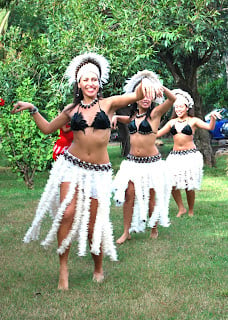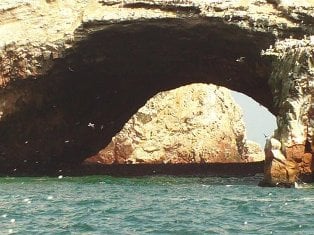 |
| Machu Picchu |
We added three new South American tours to the Friendly Planet mix last week, so for my next Getaway Dossier, I thought I’d share my knowledge about all things South America to help you plan your next trip, whether you’ve already booked it or are considering one.
The most recognizable landmark on this continent is probably the Amazon River, but there’s much more of South America’s natural beauty and ancient history worth seeing. Here are my recommendations for the best things to see, do, and know about South America before the plane leaves the tarmac.
Weather: Opposites attract. Since South America is on the opposite side of the equator from us in the U.S., the seasons are a mirror of ours. When it’s summer here, it’s winter in South America, and vice versa. The most temperate times to visit South America are the spring and the fall, which is when the temperatures are the mildest.
The rainy season is in the summer (December to March). However, the rain doesn’t normally last long on any given day. Lima, located on the western coast, has moderate weather year-round with mild temperatures and cloudy skies. Rio de Janeiro, located on the east coast, is also temperate 12 months out of the year, making it a great place to visit.
In Machu Picchu on the southwest side of the country, and at the Iguazu Falls on the eastern side, the days are warm and humid. If you’re traveling anywhere with higher altitudes, dressing in layers is a must because temperatures will drop significantly at night.
 Food: BBQ can’t be beat. South America boasts fantastic tropical fruits, such as coconut, mango, guava, pineapple, papaya, and more. And its seafood can’t be missed, especially in coastal towns. My absolute favorite thing to eat when I’m in Brazil is churrasco, also known as Brazilian barbecue.
Food: BBQ can’t be beat. South America boasts fantastic tropical fruits, such as coconut, mango, guava, pineapple, papaya, and more. And its seafood can’t be missed, especially in coastal towns. My absolute favorite thing to eat when I’m in Brazil is churrasco, also known as Brazilian barbecue.
Meat is cooked on huge skewers over an open fire. Then, waiters come by your table and slice it hot off the skewer right onto your plate. If your stomach is a bottomless pit, you’ll love this: When you’re ready for seconds, thirds, or fourths, just hit the button on your table and a waiter will be at your side with fresh, hot meat.
Restaurants that serve churrasco appear most typically in Rio de Janeiro and Iguazu, but can be found all over the country as well. If you’re not much of a meat eater, most metropolitan areas offer a varied range of cuisine.
Currency: Tip the right way. Three of the most common countries to visit in South America are Peru, Argentina, and Brazil, and each has its own currency. The currency in Peru is the nuevo sol; in Argentina, it’s the peso; and in Brazil, it’s the real.
In restaurants in Peru, an 18 percent service charge is included in the bill if you pay with a credit card. If you’re paying in cash, there isn’t a fee so you should tip between 5 and 10 percent. In Argentinean restaurants, tip 5 percent of the bill if your service charge was added and 10 percent if it wasn’t. Tip movie ushers and bus terminal porters 1 peso, and air terminal porters 2 pesos per suitcase. As for tipping in Brazil, a 10 percent tip is usually included in the restaurant bill, but you can leave more if your service was especially good.
Tip cab drivers no more than 10 percent, and tip bellboys, porters, or concierges about 1 real per luggage item or for any help they provided.
 |
| Iguazu Falls |
Landmarks: It’s all about the falls. Iguazu Falls straddles the border of Argentina and Brazil, and consists of 275 smaller falls and islands. They’re believed to be 200,000 years old and are absolutely breathtaking. Be sure to see the falls from both sides. The Argentinian side at Devil’s Throat is the most famous place to take in the spectacular views. There are also boat and helicopter rides that take you up close and personal with this natural beauty (weather permitting). The falls might be the main attraction, but be sure to visit a fantastic bird sanctuary nearby. You can see dozens of exotic species of birds, as well as butterfly and hummingbird exhibits.
Culture: Appreciate the modern and the ancient. South America is a fantastic mix of old and new. It’s inspired by the traditions of its historical culture while keeping in step with modern society. This is one of the aspects that makes the continent so beautiful. When you visit, you’ll see wonderfully modern cities with every imaginable amenity. Then you’ll visit places like Sacred Valley, where the people still honor the traditions of their ancestors in their everyday life.
Don’t forget: Layers, layers, layers. You’ll probably be experiencing significant weather changes from one location to the next, so I’d say the most important thing to remember when traveling to South America is to dress in layers. Make sure you wear good walking shoes, and bring sunscreen and bug repellent. Much of South America is in the rainforest, so you’ll definitely be happy you brought these along!
The tours we offer to these destinations highlight the history and wonder of ancient South America, and the emerging culture of its cities. It’s a beautiful continent and different from anything here in the U.S. — that’s what makes it so special.
For the full itineraries on our three new tours, visit our website. And if you have any questions, write to me or call 1-800-555-5765 and speak to our reservations team.



















